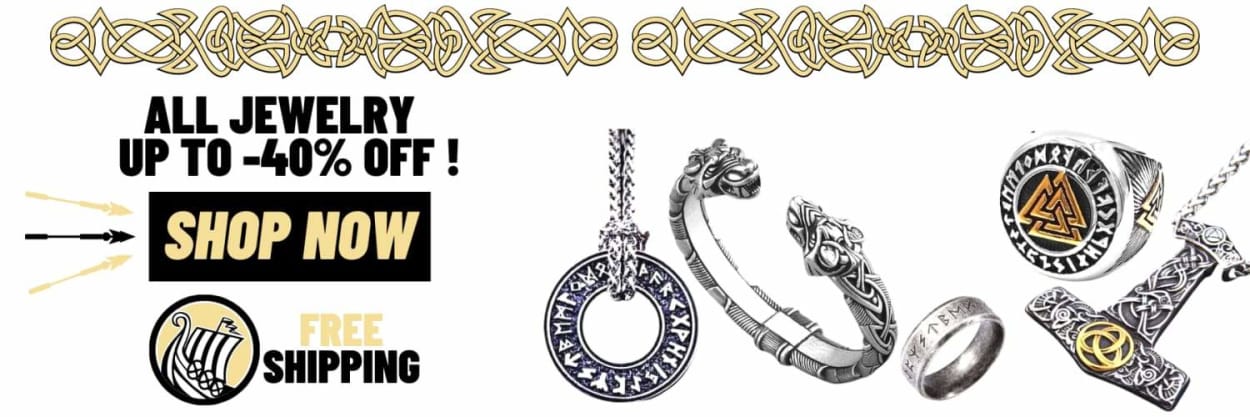Thor
Thanks to the success of the Marvel franchise [and the famous song by Kiss] most of us are now familiar with Thor, the Viking god of thunder [and rock’ n’ roll according to the Kiss song].
But how true is the modern pop culture portrayal to the Thor of Norse mythology?
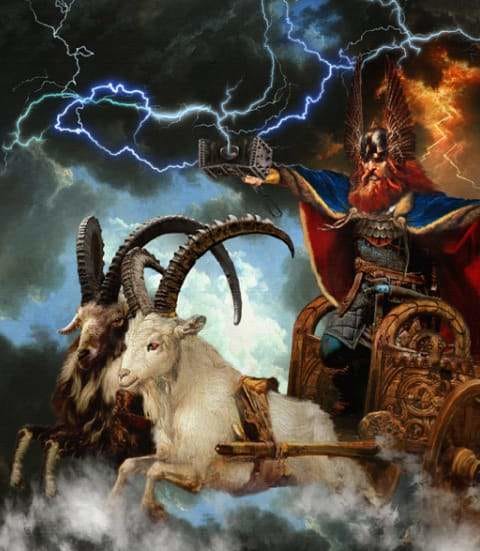
While Marvel certainly have it right in terms of an arrogant hero with a mighty hammer and insatiable appetite, the protector of men in Norse mythology is a much more complex being.
WHO THOR REALLY IS?
Just like the in the Marvel movies, Thor was the son of Odin, who was king of the Aesir gods.
But unlike in the films, his mother was not Odin’s wife Frigg, but rather the giantess Jord, who was an embodiment of the earth.
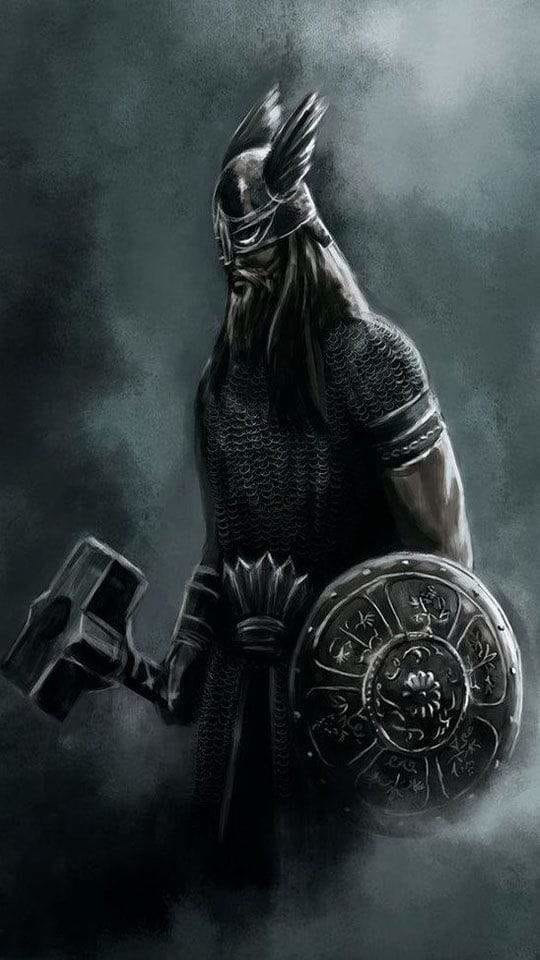
Considering Odin himself may also have been part giant, this does not make Thor that different from Loki, a full blooded giant. But in Norse mythology Loki and Thor were not brothers, though Loki did accompany Thor on many of his adventures.
While Thor is often called the god of thunder, this is an oversimplification. Thor’s name means thunder, and he was certainly considered to be the cause of thunder and lighting which he triggered every time he used his hammer Mjolnir [more on this shortly].

But as a god of the weather, Thor was also venerated by the Viking sailors that relied on the winds to steer their ships, and the Norse farmers that relied on the rains to grow their crops.
While Odin was the king of the Aesir gods, Thor was the protector of Asgard, and also mankind.

While Odin was wandering the universe in search of wisdom, Thor defended Asgard and Midgard against the chaotic forces of the giants, smashing their heads with his hammer.
As such, Thor was represented as the ideal Viking warrior, but he did not just protect the order of the universe with his might. Thor was also called upon to maintain social order by blessing important events such as births and marriages.
As the ideal Viking warrior, Thor was described and depicted as a burly Viking with an impressive red beard.
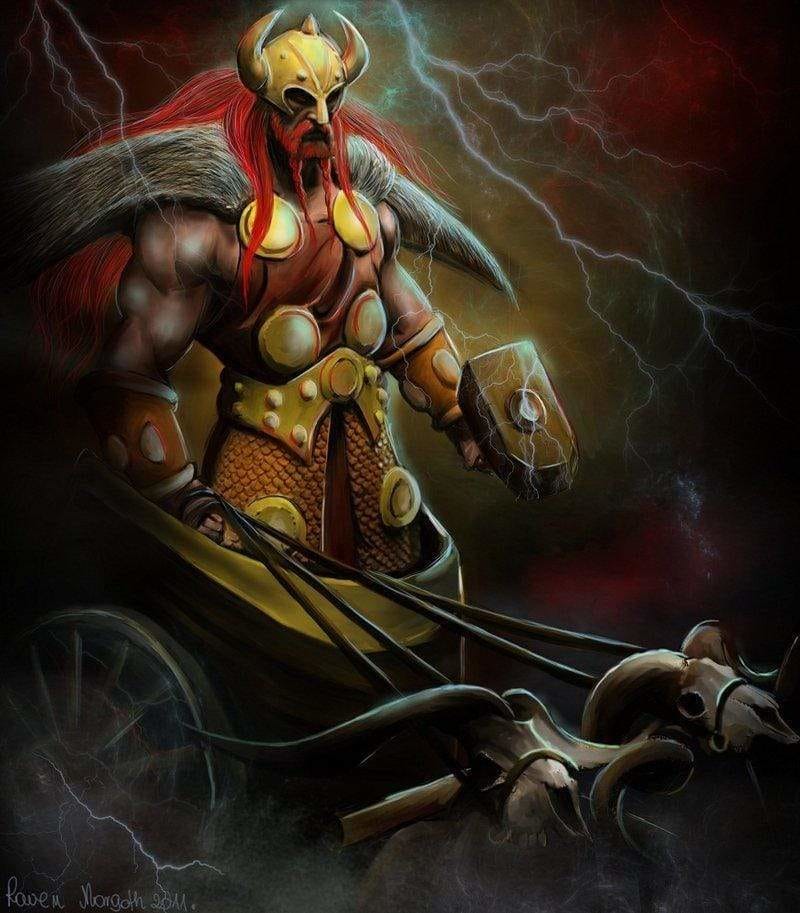
Like in the movies, he also had lightning in his eyes, and had a prestigious appetite for food and drink. But Thor was far from the embodiment of our modern ideas of a noble warrior. Quick to anger, Thor often acted impulsively, and was not always fair in his dealings.
In one story the gods do not want to pay an unnamed builder the agreed price for building the fortifications of Asgard, so the gods sabotage his work and then Thor kills the builder.
In another story, a dwarf approaches Thor for his daughter’s hand in marriage. Unwilling to agree, Thor tricks the dwarf into talking all night, so that he will forget the coming dawn, and is therefore turned into stone by the sun’s light.
POPULARITY
Despite his callous side, Thor was still the most popular god among the Vikings.
This can be seen in the names of Iceland’s founding population, more than a quarter of which have the name of the god incorporated into their own name [e.g. Thorkill or Thorgest].
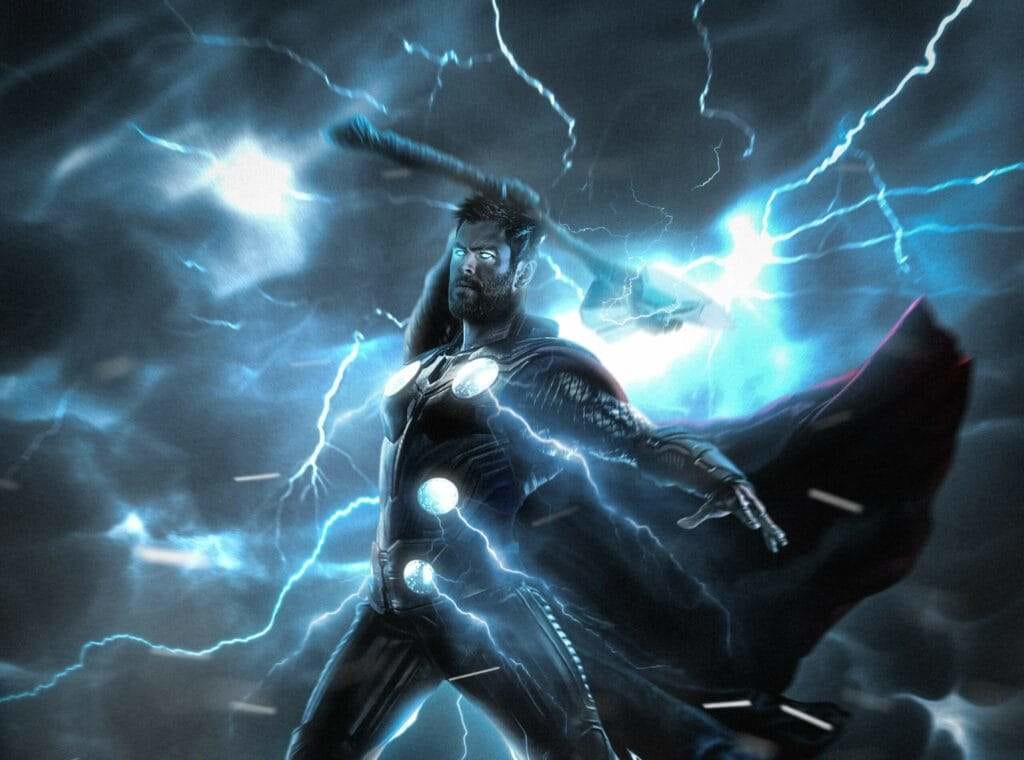
Thor’s hammer Mjolnir was also the most popular amulet found among Viking grave goods. Mjolnir continued to be used as a symbol of allegiance to the old Viking ways long into the Christian period, suggesting that Thor was the main deity held up as the Norse alternative to Jesus.
Thor’s importance can also be seen in our own modern language, as he gives his name to Thursday.
FAMILY
As well as being a son of Odin, which gave Thor many brothers, Thor had a family of his own. He was married to the goddess Sif, who was a fertility goddess and seems to have represented the ideal woman in terms of beauty and family loyalty.
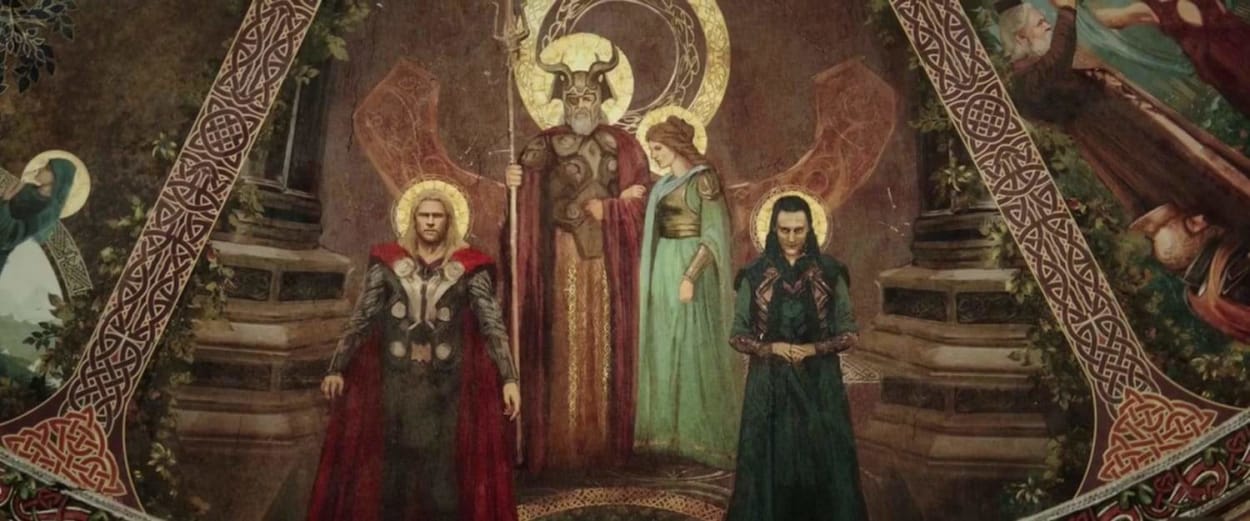
Sif does not seem to play a prominent role in the stories of Norse mythology, beyond being the wife of Thor.
As well as his wife, Thor has a giantess mistress named Jarnsaxa, which means iron cutlass. That an Aesir god would have a mistress from among their giant enemies may seem strange, but it was in fact very common.
With his wife Sif, Thor had a daughter Thrud (strength), a goddess of the heath and nature. With Jarnsaxa, Thor had a son Magni (mighty), who was a personification of strength, and may even have been stronger than his father.
Thor had another son Modi (courage), possibly with one of these women but it is not recorded. In some stories of Ragnarok, the Viking apocalypse, it is said that Magni and Modi will inherit their father’s hammer and go on to rebuild the world.
MJOLNIR: THOR’S HAMMER
Thor’s hammer has already been mentioned a few times, and it is the most famous attribute of the gods.

Called Mjolnir, which means crusher, it had the power to level mountains, and certainly the power to crush the skulls of Thor’s giant foes (well, most of them).
Just like in the movies, Mjolnir was made by the dwarves, the master craftsmen of Norse mythology. It was procured for Thor by Loki in the aftermath of some mischief.
One night, as a prank, Loki cut off Sif’s beautiful golden hair, which is thought to have represented a corn harvest. Enraged, Thor demanded that Loki replace the hair with something equally fair, or pay the price.
In order to avoid Thor’s wrath, Loki travels to the realm of the dwarves and asks them to create a headdress for Sif from the finest gold and enchant it to grow on her head.
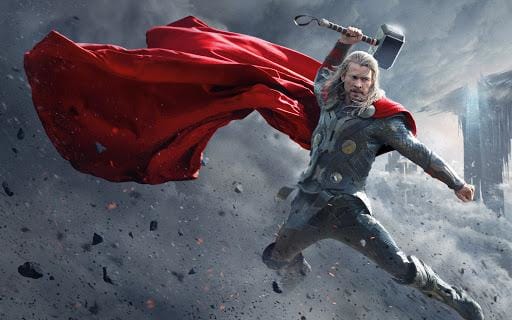
While there, Loki also procures a number of other treasures that he then gifts to the Aesir gods, including Mjolnir, Thor’s mighty hammer.
While the Marvel comics suggest that only Thor even has the power to lift his hammer, this was not the case in Norse mythology, as revealed by an episode where the giant king Thrym steals Thor’s hammer.
Waking up to find Mjolnir missing, Loki informs Thor that it has been stolen by Thrym, and suggests that the giant’s only weakness, that will allow them to access his hall and retrieve the hammer, is his passion for the goddess Freya.
The Aesir gods ask Freya to travel to the kingdom of the giant in order to help them retrieve the hammer, but she refuses.
In the end, after much protestation, Thor disguises himself as Freya and, accompanied by Loki disguised as a handmaiden, goes to Thrym on the pretext of marrying the giant.
Thor’s prestigious appetite almost gives him away as the giant king and his court say that they have never seen a woman eat and drink so much, but in the end, he falls for the ploy.
When Thrym calls on the hammer to bless his wedding to the faux-Freya, Thor is able to retrieve Mjolnir, and kill the giant king and his entourage.
While Mjolnir is Thor’s most famous attribute, it is not the only thing that he carried. In fact, in order to be able to wield the enchanted hammer, Thor had a pair of iron gloves, called Jarngreipr, and a belt called Megingjard, which doubled his already considerable strength.
MYTHS ABOUT THOR
Thor features in many of the surviving Viking stories, many of which are designed to show off his prestigious strength.
But Thor was not the strongest being in the Norse cosmos, as illustrated by the story of Thor’s adventures in the land of the giants.
As Thor travels through the land of giants, he first encounters a giant named Skrymir. This giant is so strong that Thor can not untie the knots that the giant uses to seal his bag, and when he strikes the giant on the head with his hammer in his sleep, the giant awakens and asks if a leaf has fallen on his head.
In another encounter in the land of the giants, this time with the giant Utgarda-Loki and his people, Thor is challenged to lift an enormous cat off the ground. Thor proves unable to do this, and is only able to lift a single paw.
Enraged by his failure, Thor challenges anyone to wrestle, and is insulted when Utgarda-Loki chooses a woman, called Elli (which means age), to take on the god. But Thor loses the contest. Utgarda-Loki later reveals that Thor could not lift the cat as it was the mighty serpent Jormungandr in disguise, and that lifting such a large beast may even have destabilised the universe. Similarly, the woman that he wrestled was in fact time itself, a power that no being can defeat.
THOR AND RAGNAROK
This story of Thor’s adventures in the land of the giants describes one of the god’s encounters with Jormungandr, also known as the Midgard serpent, who is described as the mortal enemy of Thor. The two are prophesied to encounter one another again during Ragnarok, the Viking end of days.
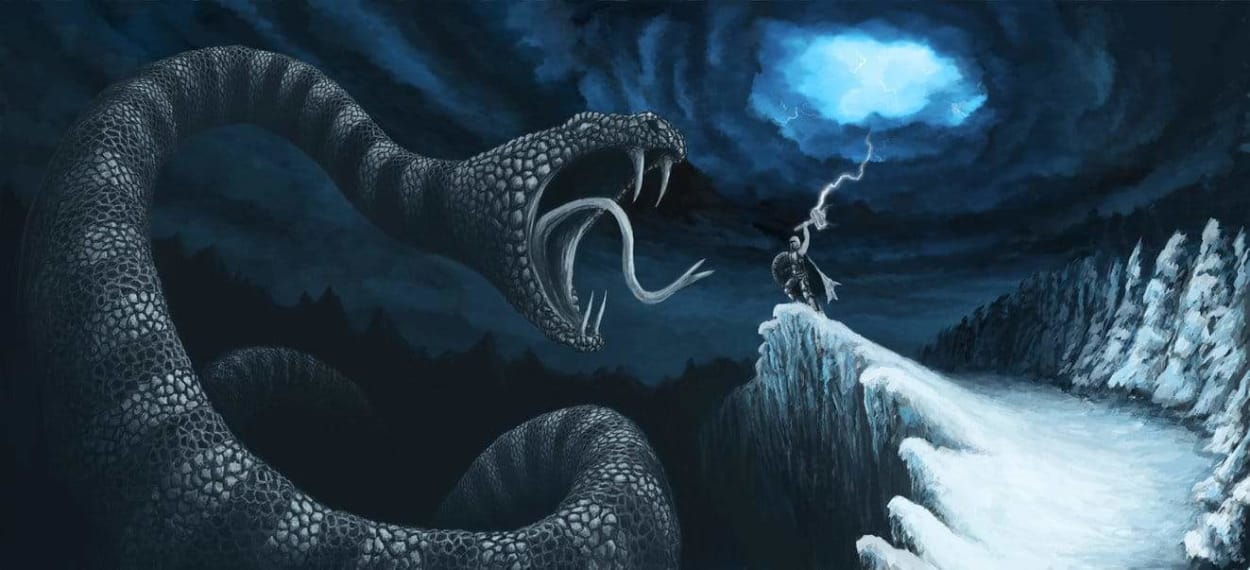
While all the Norse gods appear to have been aware of the prophecy that Thor and Jormungandr meeting will be a major part of the apocalypse, Thor seems to have been indifferent to this risk to the cosmos.
In one story, he goes fishing with the giant Hymir, and despite the giant’s warnings, insists on going fishing in the waters where Jormungandr dwells.
Catching the beast on his line, Thor attempts to pull him up. Fearing the catastrophic consequences of the two meeting, Hymir cuts the line and the serpent returns to the bottom of the sea.
Thor in turn pushes Hymir overboard and rows away, leaving him there to die.
It is said that in the final battle Thor and Jormungandr will engage in a fierce fight, the most challenging of Thor’s life.
While Thor will eventually slay the serpent, during the battle, Jormungandr will spew so much venom onto Thor that he will only be able to walk nine steps before dying himself. The serpent will also spew his venom into the air, poisoning the nine worlds of the Norse cosmos.
Thus Thor, the protector of the Norse cosmos, and the Norse cosmos itself, will die together.


